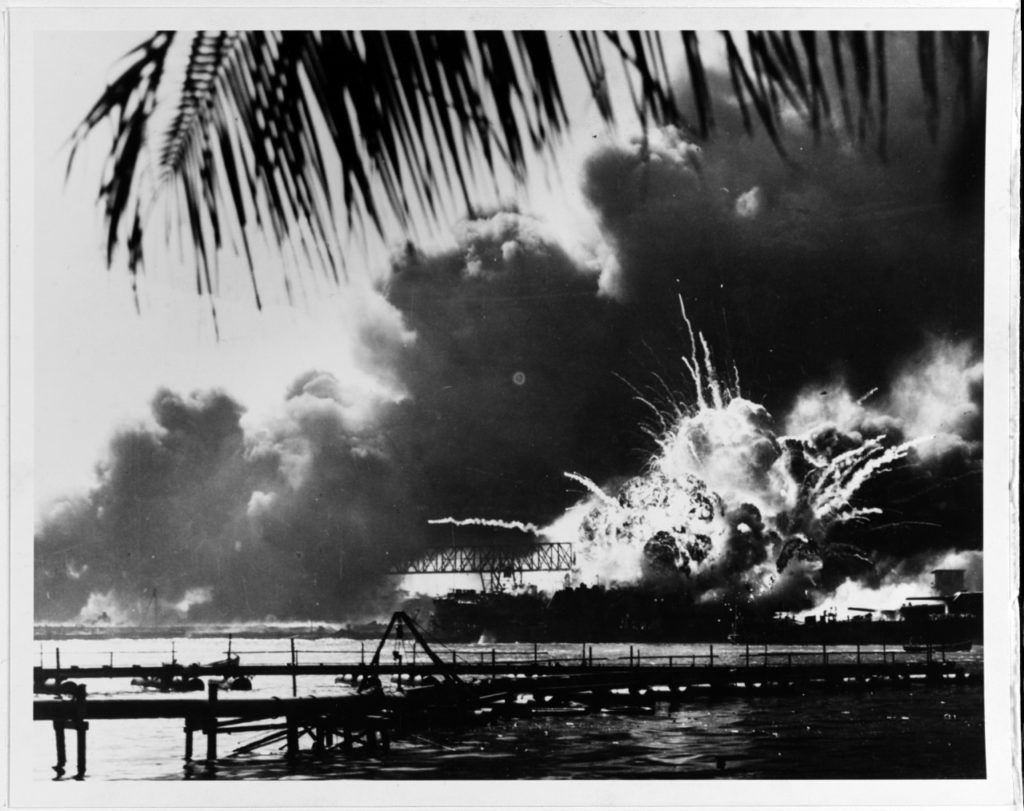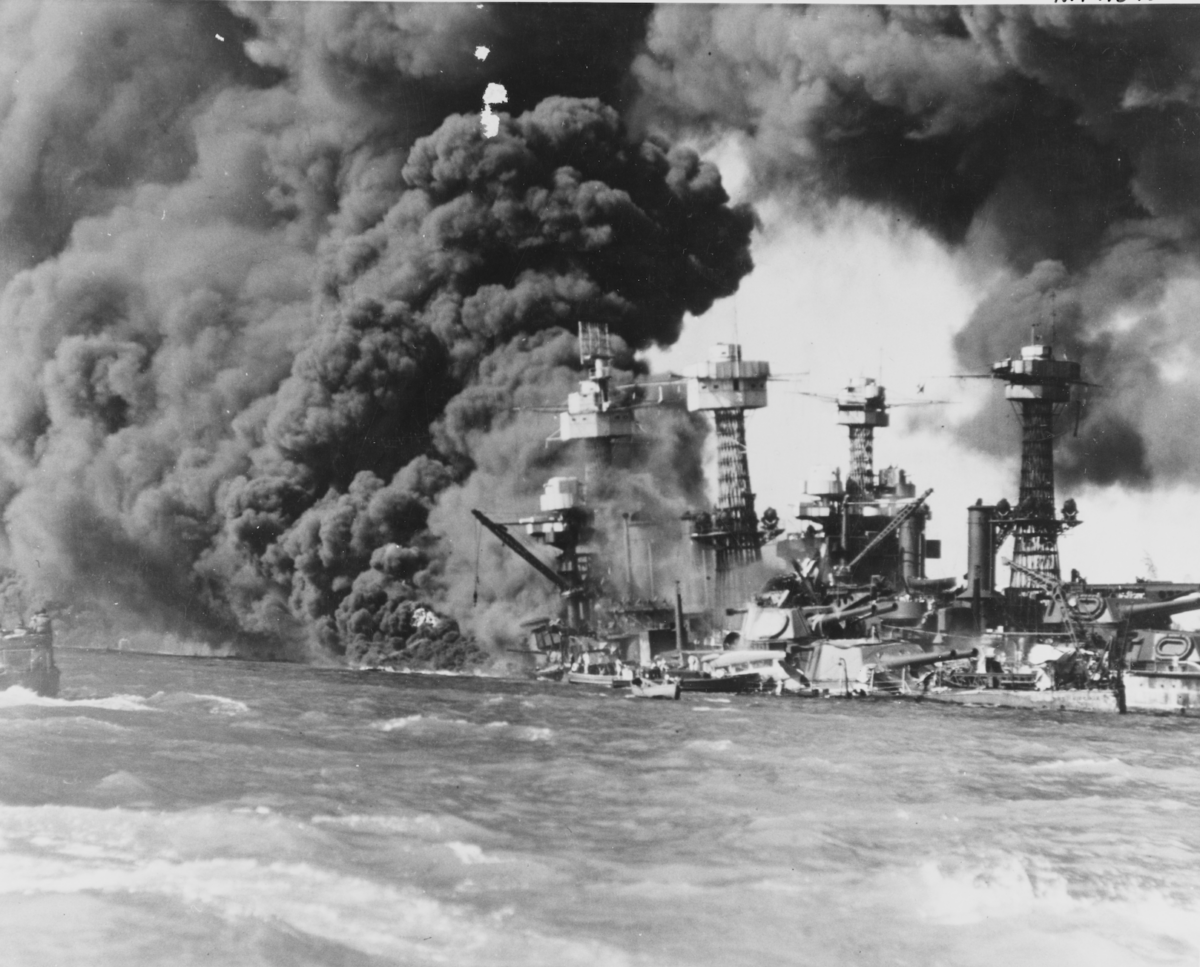On December 7, 1941 the Japanese launched a surprise attack on the US Naval Base Pearl Harbor in Hawaii, using bombers, torpedo bombers and midget submarines. On December 8, President Franklin D. Roosevelt delivered his “Day of Infamy Speech” to American citizens, informing them that this occurred despite the fact that the US was in the midst of talks to keep peace with Japan. That same day, with congressional approval, America entered into World War II.
On the southern end of Oahu, Pearl Harbor held a 22,000 acre naval base. Admiral Husband E. Kimmel of the Navy and Lt. General Walter C. Short of the Army were in command of the fleet and troops on the ground, respectively. The majority of the Pacific area’s military commands were headquartered there because of growing apprehensions regarding an aggressive Japanese presence.
Since Emperor Hirohito’s Japan wanted to expand in territory and power like some European countries, it needed natural resources, like oil and aluminum found in the Netherlands East Indies. Standing in opposition to Japanese conquest of what Japan’s leaders termed “the Southern Resource Area” was the United States. In 1940 the US, Great Britain, and the Netherlands had initiated a total embargo of oil and scrap metal to Japan in response to Japan invading French Indochina. Unless a new source of oil was opened, the Imperial Japanese Navy would be in dry dock within a year and Japanese industries would grind to a halt in 12–18 months.
A plan was developed to cripple the US Pacific Fleet at Pearl Harbor to allow time for Japan to seize the resource areas it needed and fortify them to the point that retaking them would cost more lives than the Imperial High Command thought Americans would be willing to pay. The Pearl Harbor attack plan was conceived by Admiral Isoroku Yamamoto, commander in chief of the IJN. Yamamoto had studied in the United States. He knew his nation lacked the ability to defeat the much larger, resource-and industry-rich country and did not share the opinion of many Japanese officers that the Americans were too weak-willed to fight. However, Yamamoto’s vociferous arguments against going to war with America were overruled by the High Command. The attack on Pearl Harbor, which was influenced by the successful British attack that used carrier aircraft against the Italian fleet at Taranto, Italy the previous year, was essentially a last best-hope for Japanese success in the Pacific.

Early in the morning on December 7, more than 350 Japanese planes attacked about 33 American ships on orders of Vice-Admiral Chuichi Nagumo. America sustained a loss of nearly 170 aircraft destroyed and 160 damaged that morning, as well as three ships destroyed and 16 damaged. Three thousand seven hundred Americans lost their lives, including 68 civilians. The cost to the Japanese was 29 aircraft, five midget submarines, and 130 service personnel, all but one of whom was killed in action.
EXPLORE THE HISTORYNET ARCHIVES ABOUT PEARL HARBOR
» See all Pearl Harbor Articles
Date: December 7, 1941
Location: Oahu, Hawaii
GENERALS/COMMANDERS
United States: Husband Kimmel and Walter Short
Japanese: Chuichi Nagumo and Isoroku Yamamoto
OUTCOME
Japanese Victory
CASUALTIES
United States: 3,700
Japanese: 50
American Civilians: 48-68
Importance: The surprise attack on America led to the nation entering World War II
THE PEARL HARBOR MEMORIAL
The Pearl Harbor memorial, otherwise known as the USS Arizona Memorial, is a National Monument located at the site of the sunken battleship USS Arizona in Pearl Harbor. Commemorating the 1,177 crewman who lost their lives in the attack on Pearl Harbor, it’s a tribute to World War II valor in the Pacific. Learn more about the Pearl Harbor Memorial.

